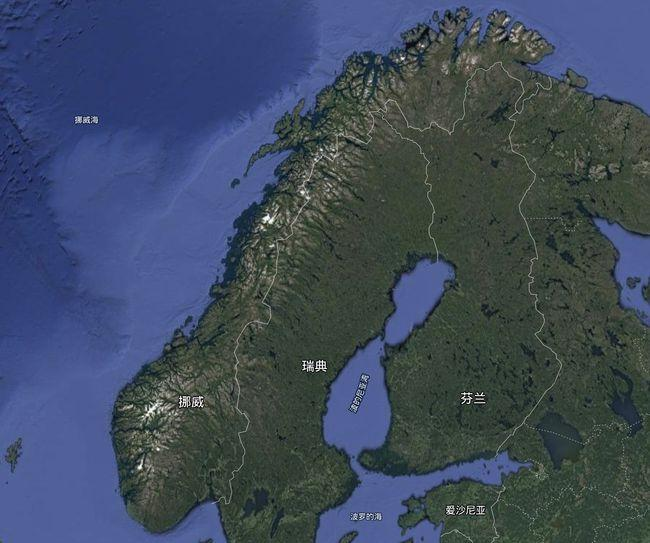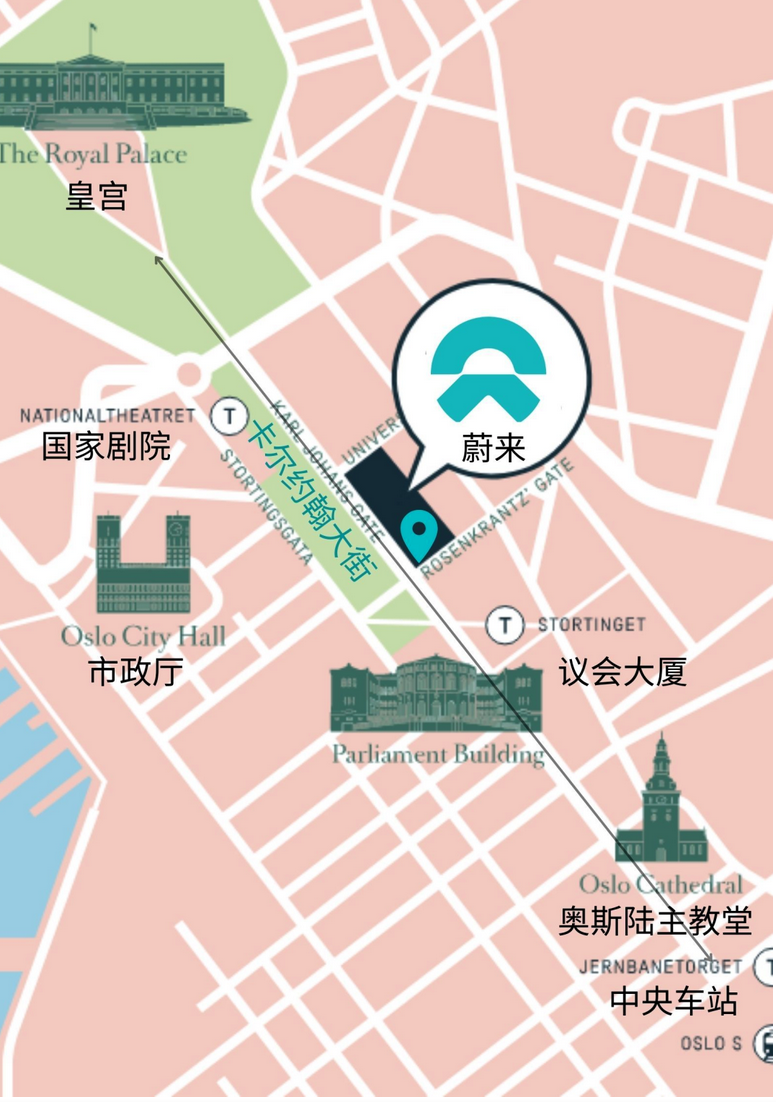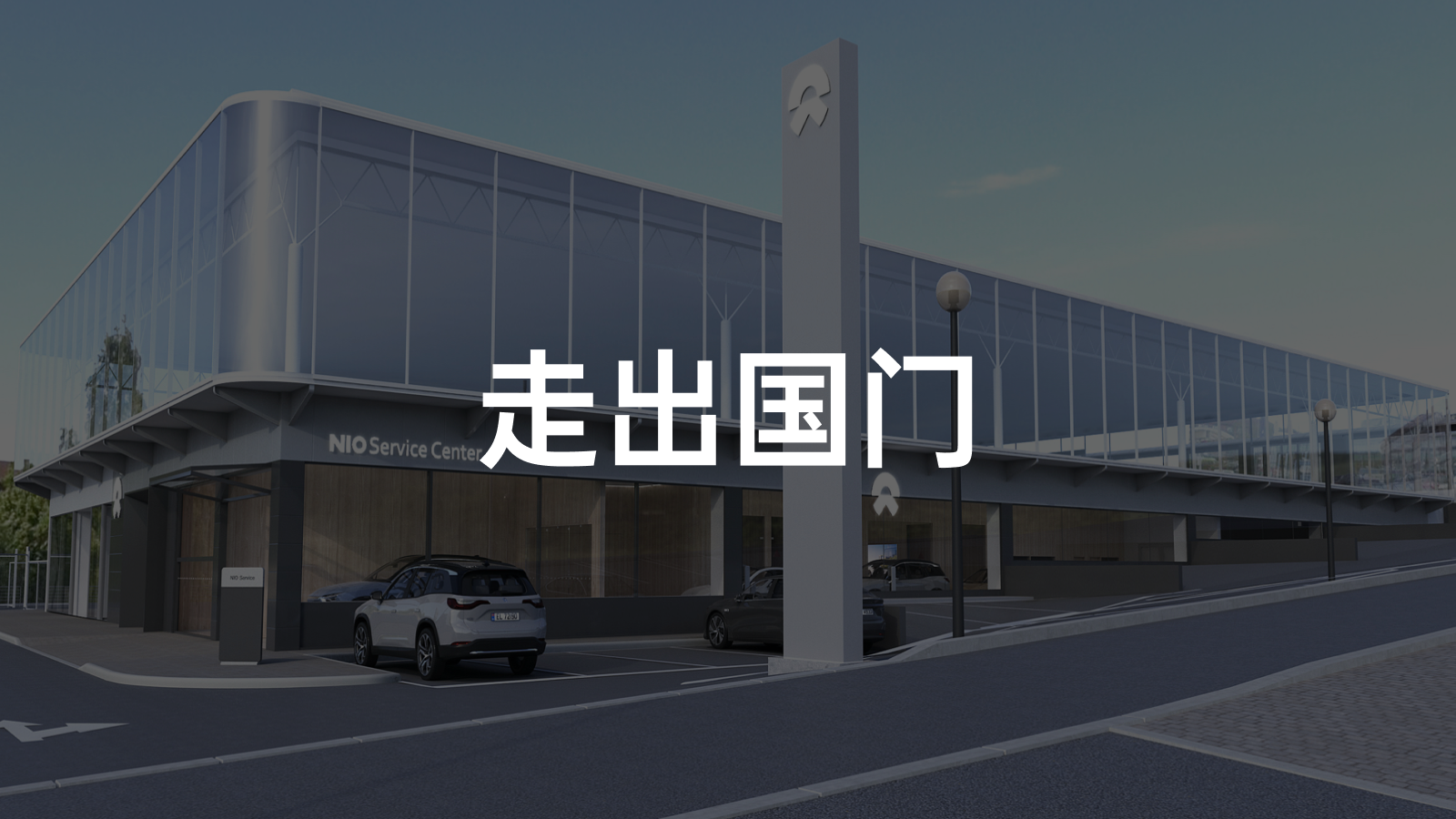NIO to Norway: Selling Cars vs. Selling in Norway
Today, the first working day after the Labor Day holiday, NIO announced the “Norwegian Strategy” in Shanghai, which is simply to “sell cars to Norway”. Without plans to build a factory or find a manufacturing partner in Europe, NIO will continue to manufacture vehicles domestically and transport them overseas for sales.
In fact, many channels “leaked” NIO’s intentions before the press conference. If I had to summarise, I believe that NIO not only wants to “sell cars to Norway”, but also wants to “sell cars in Norway”. There is a big difference between the two, and the main difference is the confidence and patience NIO displayed towards the Norwegian market, as mentioned by Li Bin during the press conference.
Even at a Loss
Since its establishment in 2014, the most important thing that NIO has done is “spend money to buy time”. Whether it is in terms of vehicle development cycles, sales channels, or service systems, NIO does not hesitate to spend money on things that can be done. The essence of this approach is to quickly form “scale effects”, and the only criterion for evaluating results is “sales performance”.
There are only two ways to increase sales: increasing penetration within the sales region or expanding the sales area. The former is a result of meticulous operation, and the latter is a short-term goal achieved by increasing investment. Li Bin said, “Some companies may choose to go all out in the Chinese market and then go to the international market. However, the competition in China’s automotive market will not stabilise within 10 years.” Therefore, in his view, NIO cannot wait ten years to do this.
I think Li Bin’s underlying reasoning is because he believes that in the intelligent electric vehicle field, NIO is still in the “qualification” stage. With more and more powerful automotive companies entering this field, it is uncertain whether NIO has the “qualifications” to “breakthrough.” The more brutal “final” competition may open in 2024.
Regarding the year 2024, if we combine the recent transformation of traditional car companies and their launched electric vehicle products, Li Bin’s “qualification race” refers to competition with these companies. If we further consider the technology companies announcing car manufacturing and the average R&D cycle of general vehicle models, it is highly probable that 2024 will be the time when they launch their first vehicle. Then, Li Bin’s “final” competition might be with these companies.Before reaching that point in time, NIO will need to form a stronger “economy of scale” to further enhance its competitiveness, which is currently considered “important but not particularly urgent” for NIO.
Qin Lihong also mentioned that although entering Norway will inevitably require some financial investment in sales channels, team members, and energy supplement services, since 90% of Norway’s electric vehicle market is concentrated in a few southern cities, the region is not particularly large, representing an investment equivalent to two domestic prefecture-level cities, which NIO can afford at present.
Therefore, NIO plans to build four battery swapping stations in Norway in the energy supplement system this year and increase it to 22 in 2022. In terms of sales channels, NIO will build four NIO Spaces in Bergen, Stavanger, Trondheim, and Kristiansand, and cover after-sales service throughout Norway in 2022.
If we combine NIO’s plan to deploy one second-generation battery swapping station per week in Shanghai in May, the investment is indeed not particularly large.
In addition, since labor costs in Europe are relatively high, pricing for services that require significant labor costs such as door-to-door car delivery and one-click charging will differ slightly from those in China.
Finally, Li Bin mentioned that they did not expect NIO to become an overnight success in Norway. Because they believe that this is a “planting” process, they have not set a clear sales target for the Norwegian region, but they are still willing to invest because they believe that this requires determination and patience.
But why did NIO choose Norway as their first stop?
Safety is Crucial
According to Li Bin, the main reason for choosing Norway as the first stop is because of several factors. First, the Norwegian market is moderately-sized, with a good atmosphere for electric vehicles, and a large luxury car market.
According to InsideEVs data, the Norwegian car market is already dominated by pure electric and plug-in hybrid models, accounting for about 75% of annual sales in 2020, with pure electric models accounting for more than half of the share. Norway has become the first country in the world where pure electric vehicle sales exceed those of gasoline vehicles.
In 2020, the best-selling pure electric car in Norway was the Audi e-tron (9,227 units), second was the Tesla Model 3 (7,770 units), and third was the Volkswagen ID.3 (7,754 units).
Second, the electric vehicle usage environment. Thanks to the natural terrain of the East-West high-low of the Scandinavian Peninsula and the influence of the North Atlantic Current, the annual precipitation is average, and the rivers do not freeze in winter, all of which combine to provide Norway with abundant hydroelectric resources.
According to data from the Norwegian Statistics Bureau, the average selling price of electricity per kWh in Norway is currently around 22.2 euros, equivalent to about 0.2 yuan RMB. Norway also imposes carbon taxes and exempts electric vehicle purchase taxes, further widening the gap between the purchase and use costs of fuel vehicles and electric vehicles.
In addition, Norway exempts import tariffs on electric vehicles, because NIO’s first model sold in Norway is the ES8 with standard features such as a 100 kWh battery, NIO Pilot, and NOMI Mate. Under the condition of not selecting other configurations, the price of this configuration of ES8 has already reached 551,900 yuan RMB. If you choose a country that imposes tariffs on electric vehicles at this time, it means that the selling price of the ES8 will basically be close to 7 million yuan RMB.
Thirdly, Norwegian residents have a high level of environmental awareness and income. Firstly, all political parties in Norway have shown a positive and favorable attitude towards electric vehicle policies, which will give Norwegian residents more confidence in purchasing electric vehicles.
Secondly, Norway’s per capita GDP has long been ranked second or third in the world, second only to Luxembourg and Switzerland. For example, in 2019, Norway’s per capita GDP was $75,420.
Taking all these factors into account, it can be seen that choosing Norway as NIO’s first overseas destination is a relatively “safe” option, with relatively controllable investment and the possibility of great returns.
So where exactly is NIO’s first overseas NIO House located in Norway? Our friends in the Norway group have already inspected and reported on this. Let’s take a look again.
Another Popular Check-in Spot
During the press conference, Qin Lihong mentioned that the address of NIO House in Norway is Karl Johans gate in Oslo, the capital of Norway. It stretches from the Palace of the Kingdom of Norway in the west to the Oslo Central Railway Station in the east, with Oslo University Square, Oslo National Theatre Square, the church, the parliament building, and other landmarks scattered in between.
More importantly, in the minds of Norwegians, this is a presence similar to Beijing’s Chang’an Avenue. In the sparsely populated Kingdom of Norway with a population of only over 5 million, on Norwegian Constitution Day on May 17th every year, the crowd and density of the Barnetog children’s parade on this street are no less spectacular than the New Year’s Eve light show on the Bund in Shanghai. There is also a pride parade in June, which is also a spectacular sight.
 No matter whether it’s Norwegians or tourists from around the world, they won’t feel unfamiliar with Karl Johan Street when they come to Oslo. It is the most prosperous street in the center of Oslo, covering almost all the important historical sites and the densest shops in the city center in just one kilometer.
No matter whether it’s Norwegians or tourists from around the world, they won’t feel unfamiliar with Karl Johan Street when they come to Oslo. It is the most prosperous street in the center of Oslo, covering almost all the important historical sites and the densest shops in the city center in just one kilometer.
The first NIO House in Norway is located at the corner of the famous Duke Paleet Shopping Center, also at the bottom right corner of this old photo. It is located in the core area of Karl Johan Street, between the Palace and the Central Railway Station, with about 10 display windows on the first floor that can be shown to the public.
NIO House has two floors in total, one on the ground floor and one in the basement. The space on the negative first floor will cover several core areas of NIO House: a library with a fireplace, the Joy Camp children’s area, meeting rooms, and shared spaces.
In addition, the display window of NIO House on the ground floor faces the equally ancient and famous Grand Hotel, which is the first choice for foreign heads of state visiting Norway. Nationalistic Norwegians also spend a lot of money to book suites with terraces at the hotel during National Day because they can enjoy a spectacular view of the entire parade from a high vantage point and also see the royal family waving to the crowd from the terrace at a distance!
Normally, especially during the peak tourist season in summer, the lively atmosphere on the street rivals that of Nanjing Road Pedestrian Street in Shanghai. In winter, Oslo’s most distinctive Christmas market is located on the square opposite the Duke Paleet Shopping Center, directly across from NIO House.
In addition to having a strong appeal to Norwegian residents, according to data from the Norwegian Statistics Bureau, most overseas tourists to Norway are primarily from Europe, with the largest number of foreign visitors to Norway coming from Germany. For NIO House, this is not only a place to serve car owners, but also a giant “outdoor advertising billboard” with huge traffic.
Last words
I don’t know if cars have a “soul,” but I do know that cars definitely have “culture,” which means that the automotive industry has always had a “fan circle,” and the automotive industry’s “fan circle” has been rising in recent years.
In the era of gasoline cars, some people were fascinated by the sensory impact of American muscle cars with large displacements, while others loved the “brainlessly fast” feeling of German steel cannons running straight, some were obsessed with the beautiful posture brought by Wagan, and of course some were loyal to the driving pleasure brought by Porsche and BMW. But the same is true: we are all input sources of car culture.
Fortunately, in the era of electric cars, some domestic car companies are also forming their own brand cultures. I think that NIO’s move to transfer its charging, battery-swapping, and service systems to Norway is essentially carrying out brand culture export.
And this time, NIO is doing “cultural export”.
This article is a translation by ChatGPT of a Chinese report from 42HOW. If you have any questions about it, please email bd@42how.com.
